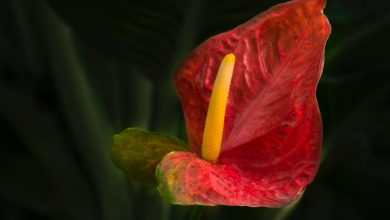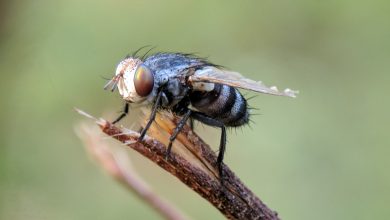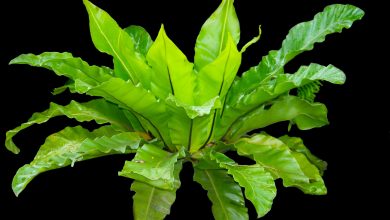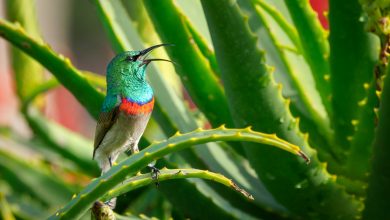How to Grow and Care for Orchids

Orchids are flowering plants that belong to the Orchidaceae family. Almost all of the species in this family are known for their colorful and fragrant flowers that are perfect for almost any occasion or garden space.
Orchids are one of the two largest flowering plant groups. There are approximately 28,000 different species in the Orchidaceae family, which encompasses as much as eleven percent of all existing seed plants. Many gardeners incorporate orchids into their garden space because of their impressive beauty and vivid coloring.
Orchids require specific components if they are to grow to their best ability, both indoors and outdoors. If you want to incorporate orchids into your garden or houseplant collection, there is much to know about these amazing plants.
Follow along to learn some valuable information about these flowers including their history, their unique features, and the best tips for growing orchids.
The Beauty of Orchids
Orchids are perennials and so are most of their leaves. In good conditions, orchids should live for several years before wilting.
A great number of orchids are epiphytes, which means they will anchor themselves to trees or shrubs and gather their nutrients and moisture from the elements that gather around it. This is most common in tropical and subtropical areas.
It is simple to tell orchids from other plants since this family of flowers has some specific characteristics that make them stand out in a crowd.
The first is the bilateral symmetry of the plants, also known as zygomorphism. This term refers to the way that orchids display their colors and patterns, where each section of the flower displays two or more identical images. This is clearly seen on their petals, where the inner coloring is usually identical on each petal.
Additionally, orchids display resupination, which refers to their structure bending back with the face pointing upwards. Orchids are also known for having extremely small seeds that are more difficult to harvest than flowers with larger seeds.
The leaves of each orchid generally reflect the climate in which they live. An orchid that gets full sunlight each day will have thick, leathery leaves. They will also have a waxy substance which allows them to obtain their water supply.
Orchids that live in shady areas, on the other hand, will have longer, thinner leaves with less water supply. Orchids are ornamental flowers, and many varieties boast outstanding colors and patterns, including golds and silvers.
With so many orchid varieties across the world, there are some genus in the family that lack the same kind of vivid colors and patterns. However, they are just as delicate and beautiful as household plants.
Orchids boast so much variation in their flowers that it’s hard for some people to believe that two very different plants are from the same family. Some boast single flowers, while others have a large number. This is often the reason why so many gardeners appreciate the orchid – no two orchid varieties look alike, and they provide great diversity in a garden.

Buying Orchids
Whether you’re buying an orchid plant on impulse or doing weeks of research ahead of time, it’s a good idea to keep these tips in mind. They will ensure you’re getting the healthiest plant possible without knowing much about the distributor beforehand.
Buy Before Blooms
It is suggested that people buy orchids that are not yet in bloom. That’s because some orchids that are already in their blooming faze might already be on their last leg, and you won’t have any idea.
Additionally, some orchid species literally bloom over and over again until they die, so you may only have your orchid for a few years before you have to toss it.
If you want instant gratification and beauty with your orchid, then you might insist on buying a plant that’s already blooming proudly. If this is the case, look for a plant that has lots of unopened buds on it so you can be sure you’ll be able to enjoy it for a while.
If you can wait for the bloom, then purchase an orchid that doesn’t have any flowering yet. This is your best chance of having a flower that will last a long time.
Check the Leaves
The leaves of an orchid can tell you a lot about its health, but it can be tricky since there are so many species of the plant. In general, look for blemishes on the leaves, as well as the presence of any bugs or soft spots.
Ideally, the leaves should be thick, hardy, and lightly-colored. If you’re seeing that the leaves look glossy and almost fake, then they may have been overfed fertilizer to attract customers.
Look for the Name
It is not helpful for you to buy a plant that is named “Orchid.” Similarly, “Flowering Orchid” is useless as well. There are so many different genera of orchid, and you’ll want to know exactly what kinds you’re taking home.
Without this information, you won’t be able to do your proper research about what the plant needs. Take the extra time and reach out to an expert in the nursery to give you the full genus name for your greatest chances of success.

Bringing Your Orchid Home
Moving any plant from a place where it has become acclimated is a bad idea; transporting plants can result in bad buds, shriveling, and sometimes death. The shock of a new environment can be hard on plants, so it’s important to be gentle with your new orchid.
If you’ve chosen one that’s already in flower, it’s safe to say it will be presented on a table or mantle. However, this shouldn’t be the place it stays. Choose a spot for the plant for the first week, and don’t bother with it.
This means holding off on watering or tampering with the soil and definitely avoiding the buds. The plant will need this time to get acclimatized to the area. Leave it in a partially shaded location, and allow the roots to dry out a little.
After the first week, place the orchid in the location of your choosing, and take care of it as directions suggest.
Store-Bought Orchids
Orchids are a very popular gift, and they’re usually purchased from nurseries or grocery stores. They always look beautiful on the shelves, but some people notice that their orchid quickly dies once it’s home.
That is because the stores will package the orchids in plastic pots that are filled with water-logged moss. As a result, there is no airflow or drainage for the plant, which are two of its must-have components.
Once you get the plant home, you can enjoy the flowering for as long as it lasts. Don’t re-pot it just yet; re-potting a flowering plant can be very disturbing to the roots.
When the flower dies, cut off the dead flower spike and begin the repotting process. There are pots that are designed specifically for orchids and they will have drainage slits to ensure proper drainage from top to bottom.
Use this type of specialized pot, as well as an orchid soil mixture for the best start. Commercial orchid soils will include peat moss, perlite, or bark. You can also put these ingredients together yourself, but you may need to play with the combination based on the way your plant responds.
Perlite and peat moss are great since they will keep the plant moist and humid. If your plant doesn’t seem happy, try other beneficial ingredients, such as compost, sand, charcoal, or cork, to see what mixture is best.

Re-Potting Orchids
You may have to re-pot your orchids for a number of reasons, including removing them from store-bought pots, when the plant becomes too top-heavy for the pot, or if the plant has outgrown its current container. In this case, you’ll probably see exposed roots hanging over the pot’s rim.
If you can, try to wait until the spring to re-pot. This will be the time right before growth begins, and by that point, you’ll be too late. If the plant is already blooming, try not to re-pot it if you can help it. If you must, complete the process as carefully as you can without stressing out the plant.
There are a few steps to this process to re-pot your plant safely.
- Take the plant out of the store-bought pot and get rid of all the soil and moss sticking to the roots. Roots should be hardy and white in color.
- If there are any rotten or black roots, you should dispose of these. They can infect the rest of the plant and stunt potential growth.
- Transport the plant into its new pot, and surround it with your orchid-specific soil. Place it in an area that will get lots of sunlight during the morning; it will need less in the afternoon.
- Watering from the base of the plant is best, as the soil will soak up only what it needs. To do this, place the pot on a shallow tray filled with gravel.
Growing Orchids
In contrast to what many people think, orchids are not difficult to grow. Because these flowers are tropical in nature, many believe they cannot thrive in colder or dryer conditions. However, it is completely possible to grow healthy orchids no matter where you are.
In fact, orchids are found and harvested in almost every location on the planet, except for glacial areas. That being said, gardeners are more than capable of keeping orchids alive if they follow some important tips.
Basic Orchid Care
Orchids will do best if you have a location in your home that boasts some strong light. However, it is important that they do not sit in the direct, hot afternoon sun. During these times, orchids will do better to have some shade and relief from temperatures that are too high.
High humidity is also important for the orchid since they are native to locations that are high in temperature and humid atmospheres. If you know that your home is very dry, implementing a humidifier can be helpful.
The roots of the orchid require lots of airflow and good drainage. A pot with a drainage hole in the bottom will be best. This type of flower will require regular watering, but soaked soil will encourage root rot and wilting. As long as the soil is moist but not soggy, the plant will be happy.
In terms of fertilizer, orchids will do well with a weakened fertilizer mixture during the growing season. It can be powder or liquid, but it’s ideal to look for something that is no more than twenty percent nitrogen. Any more than that and your plant will be sitting in unnecessary levels.
Additionally, look for a fertilizer that has about fifteen percent calcium and five percent magnesium.
Summer Care for Indoor Orchids
If you’ve opted to keep your orchids indoors during the summertime, this is when you will need to be most observant of your plant. Orchids will need weekly, heavy watering. You’ll want to soak the roots and let excess water fill into the water tray.
So long as your orchid has a means of draining excess water, you will be in a good position. Soak the plant and then leave it to completely dry out again.
Winter Care for Indoor Orchids
When the winter months come around, most plants are far more dormant than usual. This means they won’t be working as hard, and they won’t require fertilizer or consistent watering.
When it comes to the orchid, you can cut back your watering schedule to about once a month. Stick your finger into the soil to see how it feels; if it’s still cool and moist, you’re fine.
The trick will be to keep the plant warm; however, avoid leaving it near windows and drafty areas. You can mist the plant if you’d like, focusing on misting the roots and not the leaves themselves.

Phalaenopsis
There are thousands of orchid species, but one of the most popular genuses for gardeners and orchid lovers is the Phalaenopsis genus, or moth orchids. This genus boasts some of the best orchid options for beginners since they are fairly easy to care for and will reward you with blooms for months. There are about 70 different species in this genus.
For the most part, this genus of the plant does best as an indoor plant. However, they can survive in the outdoors in zones 10 through 12. These zones have warmer, more humid conditions that cater to the orchid family’s needs.
Phalaenopsis flowers are available in pink, white, and yellow colors, and they can also have stripes. They are classified as monopodial epiphytic, boasting long roots and short, leafy stems.
The flower characteristics vary greatly ranging from having small to large flowers, to having a few to many flowers, but for the most part they are all are fragrant.
Some of the species in the Phalaenopsis genus include:
- Phalaenopsis stuartiana
- Phalaenopsis sanderiana
- Phalaenopsis parishii
- Phalaenopsis phillippinensis
Light
Phalaenopsis are very interesting in that they like lots of good light, but they do not like direct sunlight at all. Their leaves are very sensitive to direct sun and will burn if left for too long. Keep the plant in a shady but well-lit location, and turn it every so often to make sure each side grows evenly.
The idea is to mimic the plant’s native region, where in the tropical climates, the flowers would have been shaded by larger canopy trees. While they are used to the hotter temperatures, they flourish when they are only slightly exposed to the sunlight.
Soil
Orchids, in their native conditions, are commonly found growing off of trees or large shrubs. This means that their “soil” is really whatever conditions are found on their chosen host.
The soil you choose for your orchid should technically replace the conditions that these hosts would supply, but it doesn’t have to be too difficult. In fact, the soil that orchids need is almost easier than the complicated soils that other plants require to survive.
For example, you could incorporate fir tree, pine tree, or redwood bark chips in your soil to mimic a tree host. Look for bark potting chips for an adequate replacement.
Another aspect of the soil should help with water retention. Perlite and charcoal are great options, and they will keep airflow moving through the soil. Because you’re working with larger pieces of matter in the soil, you’ll be able to easily determine if the matter has enough airflow and drainage.
If you want to be certain that the soil matter is working properly, you might consider putting your plant in a clear container. This way you’re able to see if there is any pooling of water or if any fungus or pest issues are present.
Water
Watering your Phalaenopsis properly requires you to know that this kind of orchid is monopodial, meaning the plant grows from a single stem. While it can store some water in its leaves, it does not have water-storing bulbs like other kinds of orchids.
That being said, this kind of plant doesn’t handle drought very well. During its growing season, be sure to water the plant weekly. Potting media should be moist but not soaked. The flowering season will require you to slow down on watering; every other week should suffice.
As with most orchids, sitting water and soaked roots are cause for disaster. Always have drainage holes in the pot to avoid rot, fungus, and wilting.
Temperature
The Phalaenopsis family likes to live in a warm atmosphere, somewhere between 75 and 85 degrees Fahrenheit. If your house is a little cooler than this, the orchid should be able to adjust.
The hotter the atmosphere is, the more moisture and humidity the plant will need. Additionally, warmer temperatures and higher moisture will also require some airflow. This will help to keep away bugs and fungus from gathering in the area.
During the winter, you’re not going to open windows for airflow; however, you might consider incorporating a floor fan into the room or a ceiling fan. This will help to keep the area warm, humid, and fresh.
Common Problems
For the most part, the Phalaenopsis family of orchids doesn’t have many known pest issues. However, there is always a way for pests to find their way into your home and to your houseplants.
Most indoor plants won’t have these issues, but if you do notice scale insects or mealybugs on your orchids, consider spraying an organic insecticide on the infested areas.
Additionally, overwatering is usually the cause of root rot and fungus. The roots need to dry out completely before they can be watered again. Sitting water is also a welcome invitation for disease, so never let excess water sit around your orchid.
As discussed earlier with orchids, a drastic change in any one aspect of the plant’s well-being can cause it to bud blast. This refers to the orchid dropping all of its buds before they flower. Try to avoid drastic changes in fertilizer, humidity, and temperature if you don’t want to experience bud blast.
Taking Care of Orchids
Orchids are very unique and often foreign-looking plants that many people love to gift or display in their homes. There is nothing better than a gorgeous orchid to brighten up a room; however, it’s important to have strong knowledge about what orchids need to survive.
Some people have a negative opinion about orchids because of how they perform after they’re taken home from the nursery or store. Experienced orchid owners know that these plants haven’t been put in the best environment, and they will need time to adjust if they’re going to be successful in the setting you’ve put them in.
Be patient with your plant. If the orchid flower dies after the first little while, it still has hope. Deadhead the orchid, and repot it in the proper soil with the right lighting, humidity, and warmth. With a little work, your plant will be healthier and happier in its new home.



